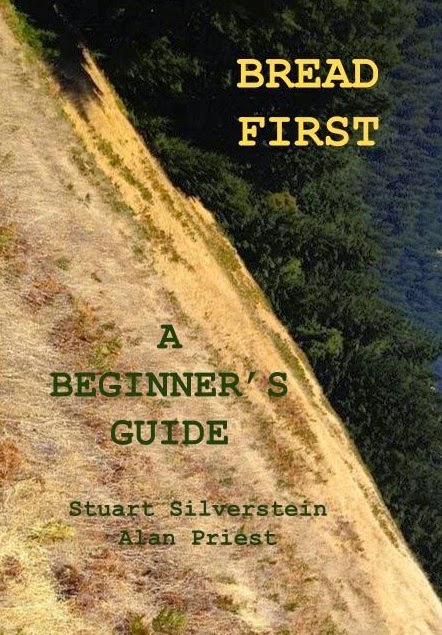The Earth Oven con't
The next step is to insulate the earth oven. You can do this right away, take a break for lunch, do it the next day, or next week. In fact, you could build some small fires in your oven to dry it out, and then make pizzas and flat breads, doing the insulation after you’ve baked in the oven for a while. After having an oven collapse, and if it’s going to happen, then it’s better to have this awkward occurrence take place before the dome is insulated. Dry your dome out with small fires before you insulate it. Raised loaves, however, do much better in an insulated oven. Pizzas and flat breads don’t seem to care.
Anyway, there's no rush to insulate the oven. Fire the oven and make some pizzas. If you see some cracks, and probably you will, try patching them with your mud mixture. Just don’t be alarmed by the cracks. When clay dries it cracks. The greater percentage of clay to sand means more cracks. Don’t be tempted to use extra sand to lessen the potential cracks. More sand means less of a heat sink and a weaker oven. Small cracks should not compromise the integrity of your oven.
Start by packing the insulation around the bottom of your earth oven, and work your way to the top. It goes on and up a lot faster than the mud that you used against the sand mold. The insulation should be 4” thick. You could actually eliminate this layer of insulation, and your oven would still be fine for making pizzas and flat breads, but it would be terribly energy inefficient and raised loaves would be very difficult to bake properly. Abbott and Nancy insulated their oven immediately with perlite and a little sawdust, bonded together with clay slip. to be con't






2 comments:
Hi, I have been reading your site with interest. I recently built a mud oven, and I'm having some problems with it. I was wondering if you could give me advice or know someone who can. My problem is that the inside of the oven is kind of crumbly. If I wipe it gently with my hand, a layer of powdery red clay will fall down. Similarly if I bump it or just cause vibrations by for instance sticking a peel in with a loaf. The quantities are small, not enough to compromise the structure, but still makes for a dirty environment to bake in. I am on a bread site (the fresh loaf) and I've asked this question there, but people don't seem to have much experience with mud ovens - more of a brick oven crowd.
Thanks, Varda
You probably don't want to hear this, but I think you should probably rebuild your oven. You might want to get your clay from a pottery supplier and then you'll know for sure that you have the "good stuff."
There are so many variables. For example:
Where did you get your clay?
Could it be silt?
What percentage of sand to clay did you add?
Can you e-mail to me some photos and tell me more about your oven.
Thanks,
Stu
the definitive book on the subject is by Kiko Denzer, and you should have a copy.
Post a Comment